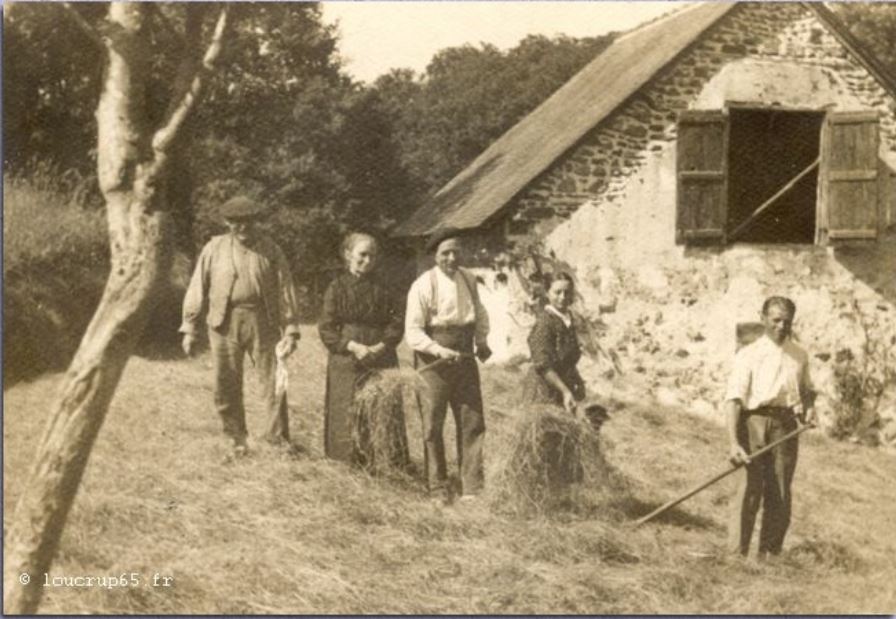
Châtenay-Malabry (FR - 92290), October 30, 2023
EFITA newsletter / 1081 - European Federation for Information Technology
in Agriculture, Food and the Environment
The informatique-agricole.org site offers you the possibility of subscribing
the RSS feeds of its two newsletters
See RSS feeds
to implement to ensure that you continue to receive this newsletter
To unsubscribe
this newsletter, please contact me directely: guy.waksman(a)laposte.net
if this
link Unsubscribe does not work.

To correspond with me (GW), please use this address: guy.waksman(a)laposte.net
To subscribe the efita newsletter (please ask your friends and colleagues
to test this link)
Efita
Newsletters subscription
Next concert (GW: Bass clarinet) / Prochain concert de la Lyre du Plessis-Robinson
(GW : Clarinette basse)
Animation for Water
conflict / Water Problems
See video
Contact: Ehud GELB
E-mail: ehudgelb(a)gmail.com
Old Soviet joke that applies to Russia and other countries
Karl Marx, returned to Earth, speaks on the radio. He gives one sentence
only:
“Proletarians of all countries, excuse me.“
NutrEvent probes AI in food, personalized nutrition and next gen petfood
Oct 17-18, RENNES (France)
What’s new in food supplements for cognitive health? How can AI be deployed
in the product development process? And how are health and wellness trends
in human foods impacting the petfood industry?
All of these topics and more are on the agenda at this year’s NutrEvent
conference and exhibition in Rennes.
See
agfundernews.com
Before computers: the old barn in Loucrup (Hautes-Pyrénées)
/ Avant l'informatique : la grange de Loucrup (Hautes-Pyrénées)
Weekly newsletters about ICT in Agriculture in English and French
Both newsletters have around 5000 subscribers.
>>> Last weekly EFITA Newsletters in English (created in 1999)
Efita
Newsletters
>>> Last weekly AFIA Newsletters in French (created more than
20 years ago in 1997) Afia
Newsletters
>>> Statistics
for the latest efita newsletter
>>> Latest
issue of the afia newsletter
>>> Latest
available satistics for the afia newsletter
Winning R&D partnerships announced for new on-farm innovations
(UK)
…/…
Successful projects
>>> Agri-Opencore project
The Agri-Opencore project, led by APS Produce, has been awarded £3.8 million
to accelerate the delivery of robotic crop systems for horticulture.
With labour shortages affecting the horticulture sector around the world,
there are huge opportunities to reduce costs and labour requirements in
the sector.
The funding will help the project create the world’s first open development
platform (software and hardware) for agri-robotic crop harvesting.
The open development platform will enable multiple organisations to contribute
and exploit the platform to accelerate the development and adoption of
robotic harvesting of crops in England.
>>> AG ARC project
The AG ARC project, led by Garnett Farms Engineering, has been awarded
£2.5 million towards the development of an autonomous cow cubicle bedding
unit.
Cow comfort is a key factor in reducing the chances of cows suffering
from mastitis, a fatal inflammation of their mammary gland, with dry and
clean bedding and careful management of cubicles being vital.
Currently, this must be done manually by farmers, but this project will
develop an intelligent robotic cubicle bedder.
The robotic cubicle bedder will autonomously and safely navigate the cubicle
shed to monitor and respond to key sensor data of moisture and temperature
on the cubicle bed to optimise dispensing of bedding.
This will help to boost animals’ health and welfare costs, improve farms’
productivity and reduce costs through efficient use of bedding.
>>> Potato-LITE project
The Potato-LITE project, led by PepsiCo, has been awarded £2.8 million
to explore better systems of potato cultivation.
Current systems of potato cultivation require intense and frequent disturbance
of the soil, with deep, destoned seedbeds necessary to avoid tuber damage.
And while reduced tillage technologies are enabling regenerative agriculture
in cereal systems, this technology has not been developed for root crop
production, such as potatoes.
Potato-Lite aims to develop new cultivation equipment and systems with
farmers and the wider supply chain, focusing on reducing the depth, intensity
and number of operations required.
Therefore, it will not only improve soil health and reduce the environmental
impact of the sector, but it will also reduce costs to make the £824 million
potato sector more resilient.
Three successful projects will share £9.13m funding to develop their novel
solutions in crop harvesting, cow health and robotics to tackle on-farm
issues.
See
ukri.org
7 fun facts about apples
There is an apple variety for every use, including new ones each year,
genetically modified apples that don’t brown, and even crabapples.
See
agdaily.com
Leaving mass / Sortie de messe à Gourin, par Jeanne Marie Barbey (1876-1960)
|
01
- 30/10/2023
|
 |
|
Livestock market / Marché aux bestiaux, par Joseph-Félix Bouchor (1853–1937)
|
02
- 30/10/2023
|
 |
|
FutureFarming.com
> Turbulent times for indoor farming, but experts remain bullish
The indoor farming industry has seen a series of closures and financial
struggles among some of its heavyweights and early movers.
> Seeding: Ultra precision planting with wood pulp fiber tapes: a opportunity
for fine-seeded crops
In the realm of precision agriculture, a novel approach is gaining attention—seeding
with wood pulp fiber tapes.
> Robot software: Krone Big M mower with robot software prevents dead
animals
The German machinery manufacturer Krone, in collaboration with software
supplier Lacos, offers software for the Krone Big M Mower.
> Regenerative: 12 ventures can apply for Regenerative Farming Accelerator
Programme
A new initiative wants to transform the landscape of sustainable agriculture
as we know it.
> Drones: Sowing cover crops in maize with a drone
Pieter van Leeuwen Boomkamp, anticipating the harvest in mid-September,
had the cover crop sown in his silage maize using a drone.
> Acquisitions: CNH completes purchase of Hemisphere GNSS
CNH Industrial has completed its purchase of the global satellite navigation
technology leader Hemisphere GNSS.
> Electrifying fields: Dutch farmer tests 200 HP electric Fendt tractor
Dutch arable farmer Koninklijke Maatschap de Wilhelminapolder (KMWP),
is putting the 200 HP Fendt 700 Vario Electric tractor to a test.
> The power of precision farming
In today's rapidly evolving agricultural landscape, technology plays a
crucial role in empowering farmers to meet the challenges they face. What
makes precision farming important for future farming? Jesper Riber Nielsen,
Director, SEGES Innovation P/S, points out six main reasons why precision
farming is important now and in the future.
> Indoor farming: New crops and higher yields in indoor vertical farming
Israeli startup Grow-tec combines new technology with plant science to
add new crops to indoor vertical farming.
> Weed control: Continental tackles weeds with high-pressure boiling
water
Tire manufacturer Continental will be showing a chemical-free method of
combating weeds at the Agritechica trade fair in November.
> Getting started smoothly with unmanned tractors through proper preparation
Stef Ruiter from the flower bulb company Ruiter-Wever in the Netherlands
quickly became intrigued by the possibilities of an unmanned tractor.
> Precision agriculture: Why a farmer adopts – or doesn’t adopt – precision
technology?
A new study gives farmers' viewpoints on the most influential factor behind
adopting new technologies and practices: profitability.
> Field robots: VTE field robot can be towed by a tractor
The VTE field robot by machine manufacturers Krone and Lemken is getting
a new version in 2024: version 3.0.
> Weed control: Zocon build a 15-meter-wide precision harrow
Dutch machine manufacturer Zocon has built a 15-meter-wide precision harrow
with a tine spacing of 2.2 centimeter.
> Indoor farming: Artisan Green and Siemens accelerate indoor food
production in Singapore
Artisan Green, a leading indoor farming company, has partnered with Siemens,
a global technology leader, to revolutionize sustainable food production
in Singapore.
> The power of precision farming
More than 90 % of Denmark’s agricultural land is managed using digital
tools for crop and cultivation planning – and 76 % is, to some extent,
cultivated with the use of precision technology. Want to know why? With
precision farming, farmers can not only reduce their environmental footprint,
they can also maximise their profits by making decisions based on data-driven
insights. Meet us at Agritechnica and get started.
> Fertilizer: Iowa Nitrogen Initiative to bring more precision to fertilizer
rates
A state-funded Iowa State University research project is collecting data
from trials across Iowa to build models that offer far more granular guidance.
> Electric tractors: Electrifying fields: Dutch farmer tests 200 HP
electric Fendt tractor
Dutch arable farmer Koninklijke Maatschap de Wilhelminapolder (KMWP),
is putting the 200 HP Fendt 700 Vario Electric tractor to a test.
> Indoor farming: New crops and higher yields in indoor vertical farming
Israeli startup Grow-tec combines new technology with plant science to
add new crops to indoor vertical farming.
> Turbulent times for indoor farming, but experts remain bullish
The indoor farming industry has seen a series of closures and financial
struggles among some of its heavyweights and early movers.
> Autonomous systems: IPA robots demonstrate autonomous route planning
capability
The autonomous outdoor navigation technology developed at Fraunhofer IPA
in Stuttgart, Germany, can cope with all challenges for outdoor navigation.
> Drones: Sowing cover crops in maize with a drone
Pieter van Leeuwen Boomkamp, anticipating the harvest in mid-September,
had the cover crop sown in his silage maize using a drone.
> Direct-seeded rice: Bayer introduces agricultural system for direct-seeded
rice
Bayer plans to bring direct-seeded rice to one million hectares, supporting
two million early adopter-smallholder farmers and their families in India.
> Fertilizer spreader: Valtra keeps fertilizer spreader automatically
horizontal
The idea of the Finnish machinery manufacturer Valtra is to automatically
maintain the horizontal position of the fertilizer spreader.
> indoor farming: Stacked Farm to build indoor farms in each capital
city of Australia
Stacked Farm expects its modular design of indoor farms will enable a
rapid expansion.
> Electric propulsion: Claas tests partially electric propulsion for
Lexion combines
The German machinery manufacturer Claas is working on a hybrid propulsion
system for Lexion combines.
See futurefarming.com
The pig market / Le marché aux cochons d'Auray, par Joseph-Félix Bouchor
(1853-1937), Vannes, musée des Beaux-Arts La Cohue
|
03
- 30/10/2023
|
 |
|
Portrait of an Fouesnant inhabitant women / Portrait d’une Fouesnantaise
par John Recknagel (USA, 1870-1940)
|
04
- 30/10/2023
|
 |
|
The Signal / globalagtechinitiative.com
> AMVAC: Trending Forward in Ag Technology
Discover how AMVAC is shaping the future of agriculture with its forward-thinking
approach to technology.
> How Digital Farm Technology at This U.S. Ag College Is Fostering
Advancements in Research and Innovation
The College of Agriculture, Food, and Natural Resources at Prairie View
A&M University has adopted the FarmERP smart farm management platform.
> CropX Technologies Unveils Its Inaugural Sustainability Report
This report highlights CropX's dedication to sustainability and showcases
the company's global impact.
> AquaSpy: Maximizing Yield, Minimizing Costs in AgTech
Dive into the world of AquaSpy, where technology meets agriculture to
optimize water usage and increase yields. With innovative soil moisture
monitoring and data-driven insights, farmers can achieve maximum results
while minimizing input expenses. AquaSpy is reshaping the future of irrigation.
> IFAD, Grow Asia to Support Farmers with Digital Tools to Modernize
Agriculture in Southeast Asia
The SEEDS project aims to accelerate economic development for small-scale
farming families through digital and ICT solutions.
> North Dakota Grant Awarded to Bushel to Build Digital Tools to Boost
Sustainability Program Enrollment
Bushel to bring additional functionality to Bushel Farm to improve the
farmer and agribusiness experience for sustainability programs.
> CEA Startup Cuts Water Use by 92% with Autonomous Mobile Robots
Hippo Harvest deploys Zebra Technologies’ robotics automation and ML solution
in greenhouses to reduce water consumption and food waste.
> Corteva Agriscience: Laser Focused on Innovation and Sustainability
Corteva Agriscience leverages data and technology to help farmers produce
more with less.
> Intelinair Revolutionizes Crop Intelligence: A Game-Changer in AgTech
Intelinair is reshaping the future of agriculture through its cutting-edge
technology.
> State of the Ag Tech Industry: Experts Share 2023 Advancements and
2024 Forecasts
Five ag tech experts explored the trends for 2023 for advancing ag tech
and what to lookout for in 2024 during our recent webinar.
> Voices of Women in Ag Tech: Ambassador Profile on Mineral's Erica
Bliss
We bring you exclusive insights from our inspirational ambassadors and
other women leading the way forward in ag tech.
> Intelinair Revolutionizes Crop Intelligence: A Game-Changer in AgTech
Intelinair is reshaping the future of agriculture through its cutting-edge
technology. By providing real-time and actionable insights into crop health,
nutrient levels, and growth patterns, Intelinair is empowering farmers
to make informed decisions and optimize their yields like never before.
> Computer Imaging For Early Detection of Greenhouse Diseases
Computer vision and AI are proving themselves as valuable tools in many
areas of CEA, particularly for the early detection of pests and diseases.
> FIRA USA 2023 Establishes Itself As the Must-Attend Event for North
American Agricultural Robotics Industry
FIRA USA, held September 19-21 in Salinas, CA, welcomed more than 1,700
participants from 40 U.S. states and 30-plus countries.
> 5 Ways AI Technology Will Improve Agriculture in 2024
Contributing writer Reinder Prins shares five ways AI has the highest
potential to continue improving agriculture in 2024.
> How Satellite Communications Company Iridium Helps Manage the Flow
of Crop Inputs
Iridium’s Greg Malakoff explains how the ag community uses the company’s
network of satellites to ensure data collected is available at all times.
See globalagtechinitiative.com
Persistent heat / Chaleur persistante
|
01
- 30/10/2023
|
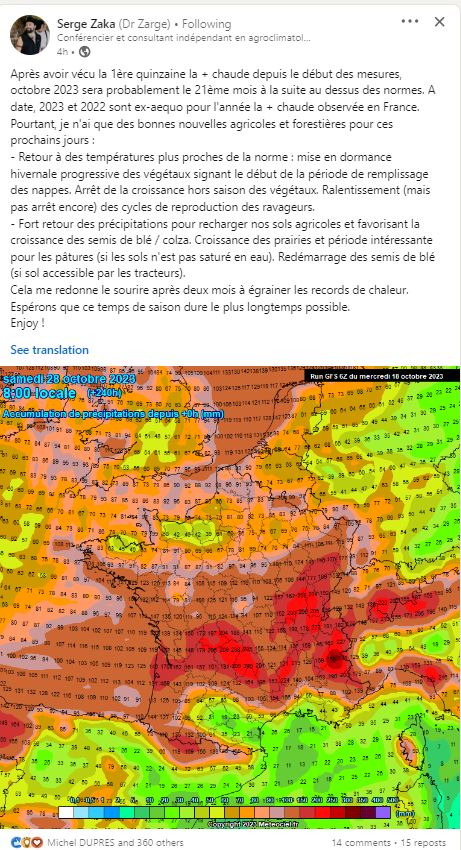 |
|
New Speaker: Most conservative speaker / un nouveau Président de la
Chambre des représentants extrêment conservateur
|
02
- 30/10/2023
|
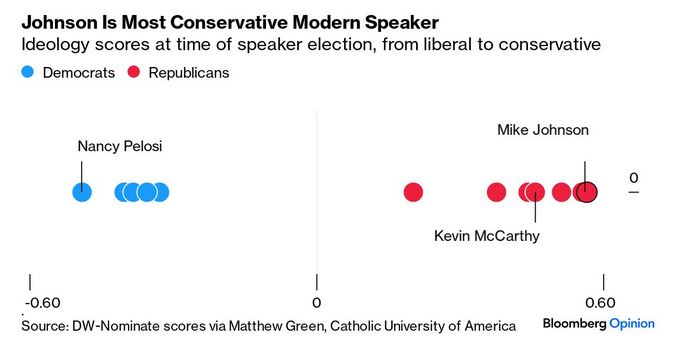 |
|
Indonesian dynasty / Dynastie présidentielle en Indonésie
|
03
- 30/10/2023
|
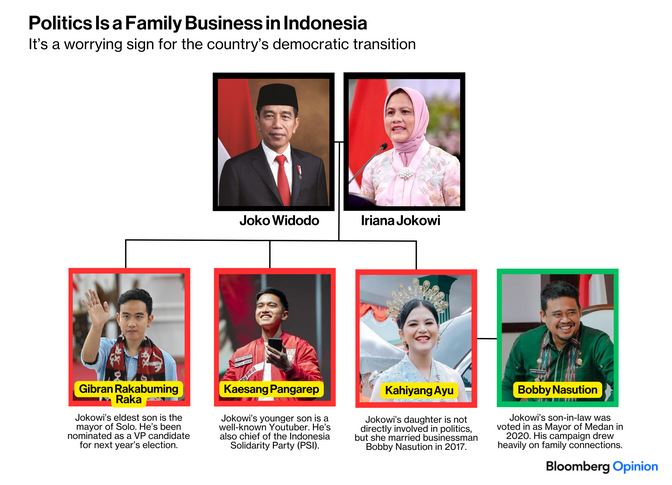 |
|
Less sex, less children in Hong-Kong / Plus d’envie d’avoir des enfants
à Hong-Kong
|
04
- 30/10/2023
|
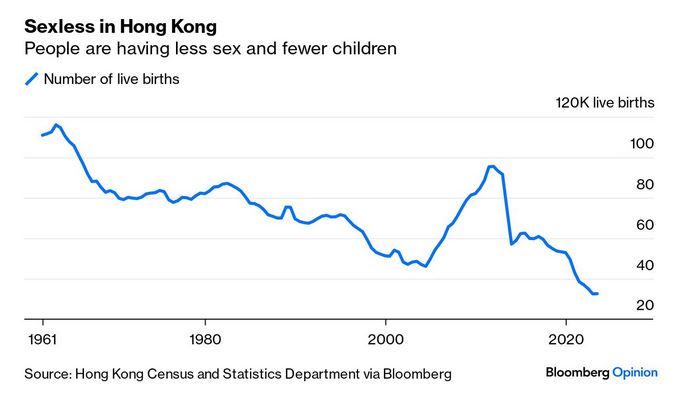 |
|
Japanese elderly people are working very late / Les japonais travaillent
jusqu’à très tard dans leur vie
|
05
- 30/10/2023
|
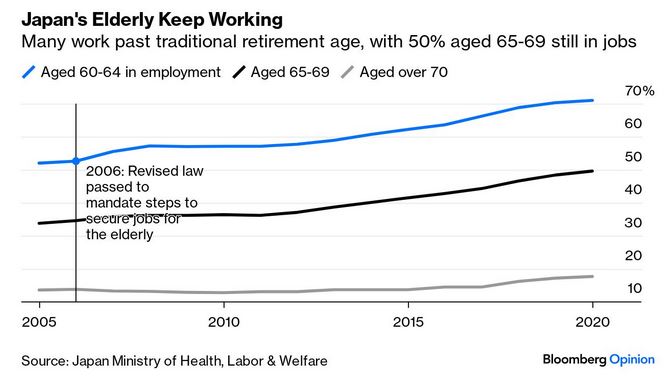 |
|
The power of precision farming
…/…
More than 90 % of Denmark’s agricultural land is managed using digital
tools for crop and cultivation planning – and 76 % is, to some extent,
cultivated with the use of precision technology. Want to know why? With
precision farming, farmers can not only reduce their environmental footprint,
they can also maximise their profits by making decisions based on data-driven
insights.
…/…
See
futurefarming.com
How Agriculture Can Capture the Carbon Market Opportunity, by Association
of Equipment Manufacturers
As the trend toward carbon emissions reduction continues, American farmers
are being presented with a new opportunity. By adopting certain climate-smart
agriculture practices, farmers can not only help protect the environment
and reduce operating costs, but also create a new income stream by selling
carbon offset credits on a carbon market.
What is a carbon market? To put it simply, when a company avoids, reduces
or captures more carbon than it creates, that company creates carbon offsets.
Those offsets are valuable to other companies that are unable to reach
carbon neutrality. A carbon market facilitates the sale of carbon offsets
by those who have them to those who need them.
Some industries are well-positioned to create carbon offsets. Agriculture
is one of them, particularly when it comes to crop farming.
.../...
See
globalagtechinitiative.com
CarbonFarm Technology lands $2.6m to decarbonize rice through satellite-verified
carbon credits
- Paris, France-based CarbonFarm Technology has raised a €2.5 million
($2.6 million) seed round to help decarbonize rice farming through satellite-verified
carbon credits.
- The round included participation from Racine2, operated by Serena and
makesense; TechMind, Ponderosa, AgFunder, Climate Capital, and BPI France.
- CarbonFarm Technology will use the new funds to expand across the world’s
biggest regions for rice cultivation including Asia, Africa and South
America.
>>> Simpler tech, stronger data
Rice, which is both a cause and casualty of climate change, accounts for
about 12% of global methane emissions. At the same time, it has enormous
potential to mitigate greenhouse gas emissions through practices such
as increasing nutrient efficiency and the Alternate Wetting and Drying
(AWD) method, which can reduce methane emissions from rice by as much
as 48%.
“In terms of mitigation potential, it’s actually higher than other categories
in agriculture,” CarbonFarm cofounder and CEO Vassily Carantino tells
AgFunderNews.
Even so, when Carantino and his colleagues founded the company in 2021,
few were working to decarbonize rice production, let alone issuing carbon
credits for mitigation.
“We looked into it and realized MRV [measuring, reporting and verification]
was really hard to perform,” says Carantino. “It was really hard to bring
the proof that farmers had changed their practices and that this change
led to a reduction in emissions.”
Adequately measuring emissions reductions over thousands of hectares requires
continuous monitoring of new practices. Farm logbooks are one way of doing
this, but these are often cumbersome and produce low-quality results.
CarbonFarm turned to satellites because they offered both a simpler way
of monitoring practices and stronger data.
“It’s difficult to ask farmers to be the judge and the one providing this
information to the buyer,” says Carantino. “When you’re using satellites,
you’re using information that is independent by nature, unbiased. It’s
a scientific way to observe what farming practices have been employed
in very large areas.
>>> How CarbonFarm works
CarbonFarm offers what Carantino calls “end-to-end services” that include
satellite monitoring of practices, quantifying greenhouse gas emissions,
managing the carbon certification process, and finally, brokering the
credits on voluntary carbon markets.
When rice farmers implement sustainable practices into their operation,
CarbonFarm can verify the change in practice via satellite observation
from space. “That brings us proof of change by every participating party
within a project,” he notes.
From satellite observations, CarbonFarm’s AI model observes the practices
to estimate emissions coming from that exact location. This in turn acts
as evidence of emissions reductions and allows the farmer to claim a carbon
credit.
“We handle the certification process with [carbon offset programs] Verra
and Gold Standard. And then we handle the sale of the certified credits,”
adds Carantino. “So this is an end-to-end service that allows farmers
to benefit from additional revenues, which are pretty substantial — the
farmer can can earn up to 20% additional profits per year.”
CarbonFarm doesn’t work directly with farmers, but instead with agribusinesses,
rice buyers, carbon credit developers, governments and others that have
direct access to farmers and built-in trust from them.
“We work with local partners that have an existing trusted relationship
with smallholder farmers. It can be a rice-buyer working with contract
farmers, a rice mill, extension services from the local government, or
a local NGO,” Carantino notes.
To date, some of CarbonFarm’s largest customers include the United Nations
Development Programme, Danone, Mars, and many others.
The company also does Scope 3 emissions qualification for some of the
world’s largest rice buyers, including Mars and Ebro, says Carantino.
Finally, CarbonTech supports Article 6.2 of the Paris Agreement, which
provides a framework for the transfer of carbon credits from country to
country, state to state, or even among private sector companies. For example,
the company is providing MRV for the first Article 6.2 project on rice
methane, which was implemented by the UNDP in Ghana.
.../...
See
agfundernews.com
Fascinating Maine legislative work / Dans le Maine, un travail législatif
un peu baroque
|
06
- 30/10/2023
|
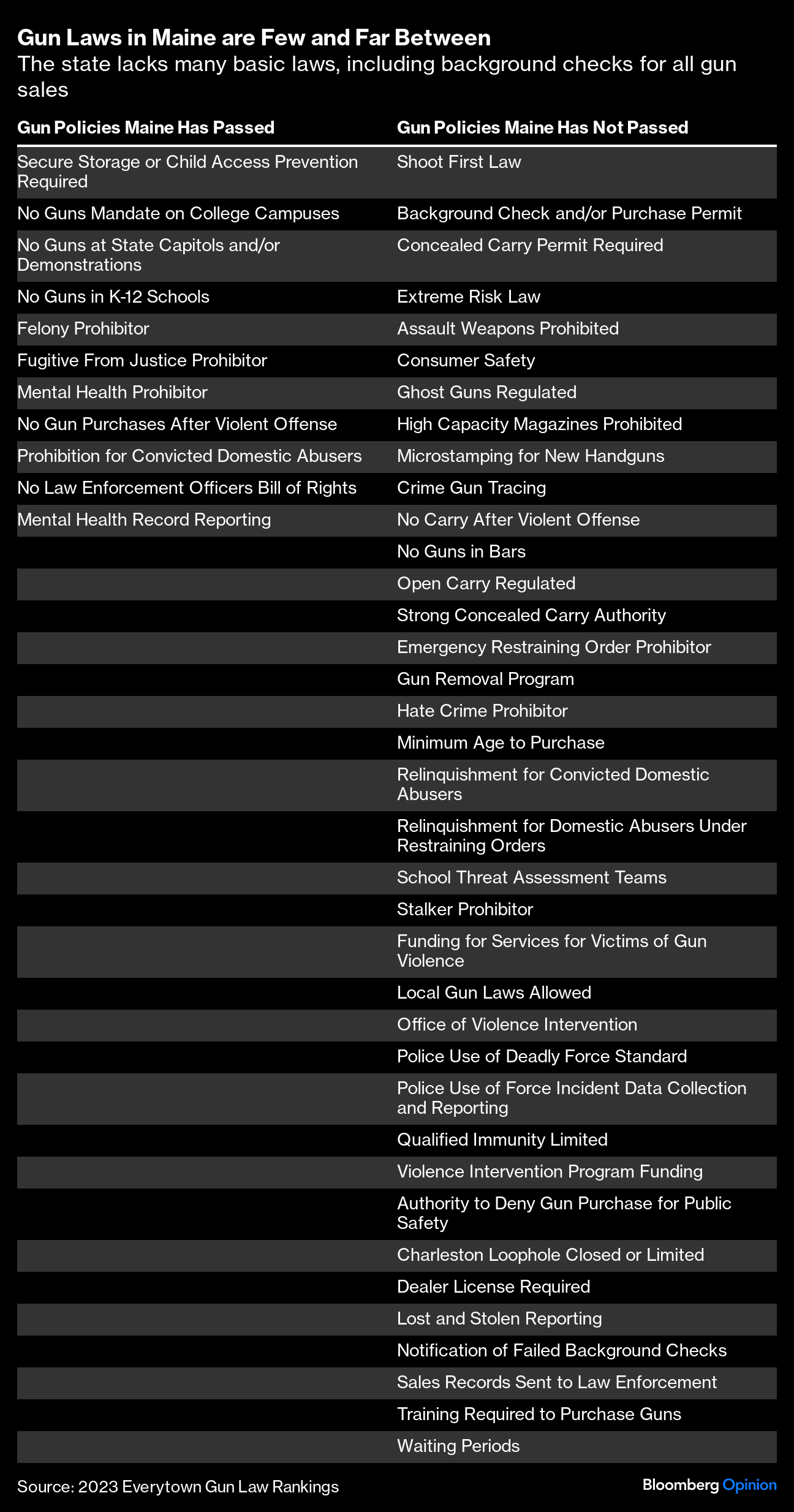 |
|
More and more mass shooting in USA / De plus en plus de crimes de masse
aux USA
|
07
- 30/10/2023
|
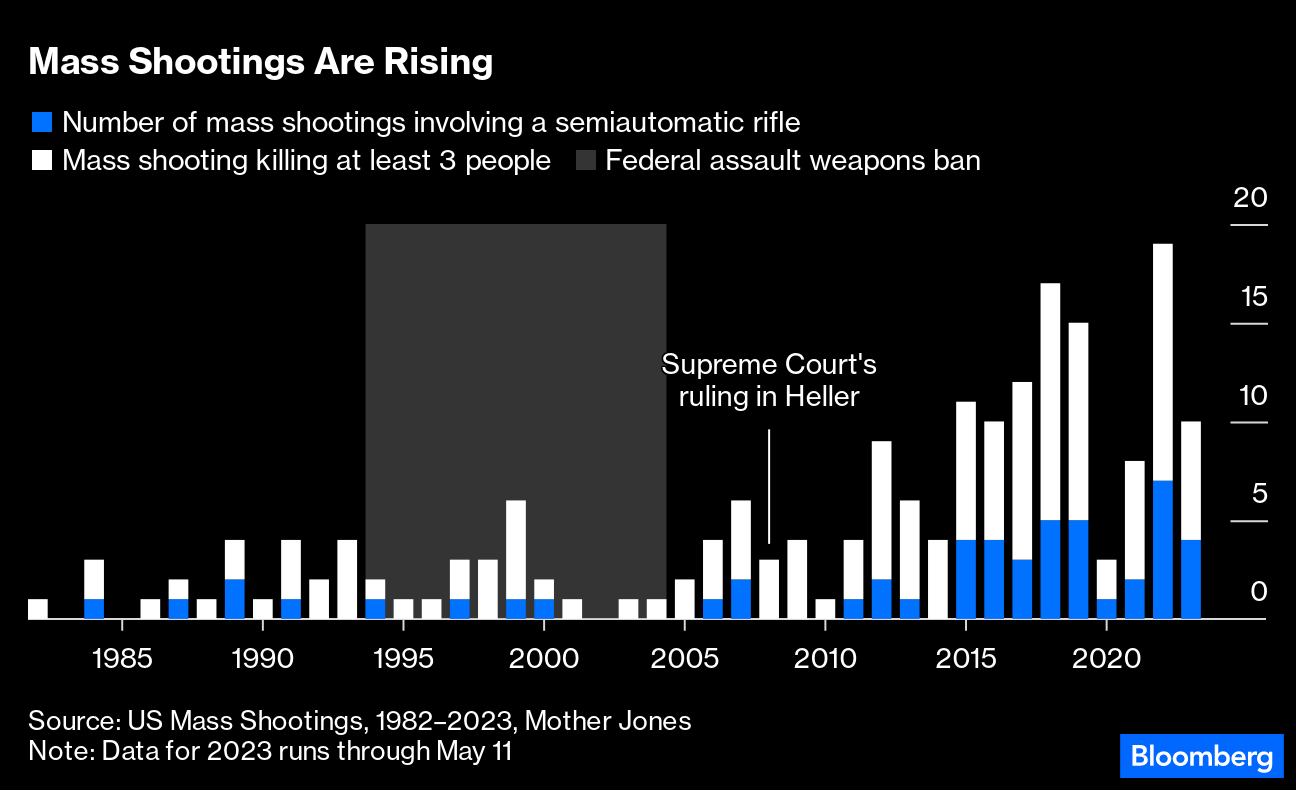 |
|
Buying firearms to protect yourself or to kill yourself? / Acheter
des armes pour se protéger et se suicider au besoin
|
08
- 30/10/2023
|
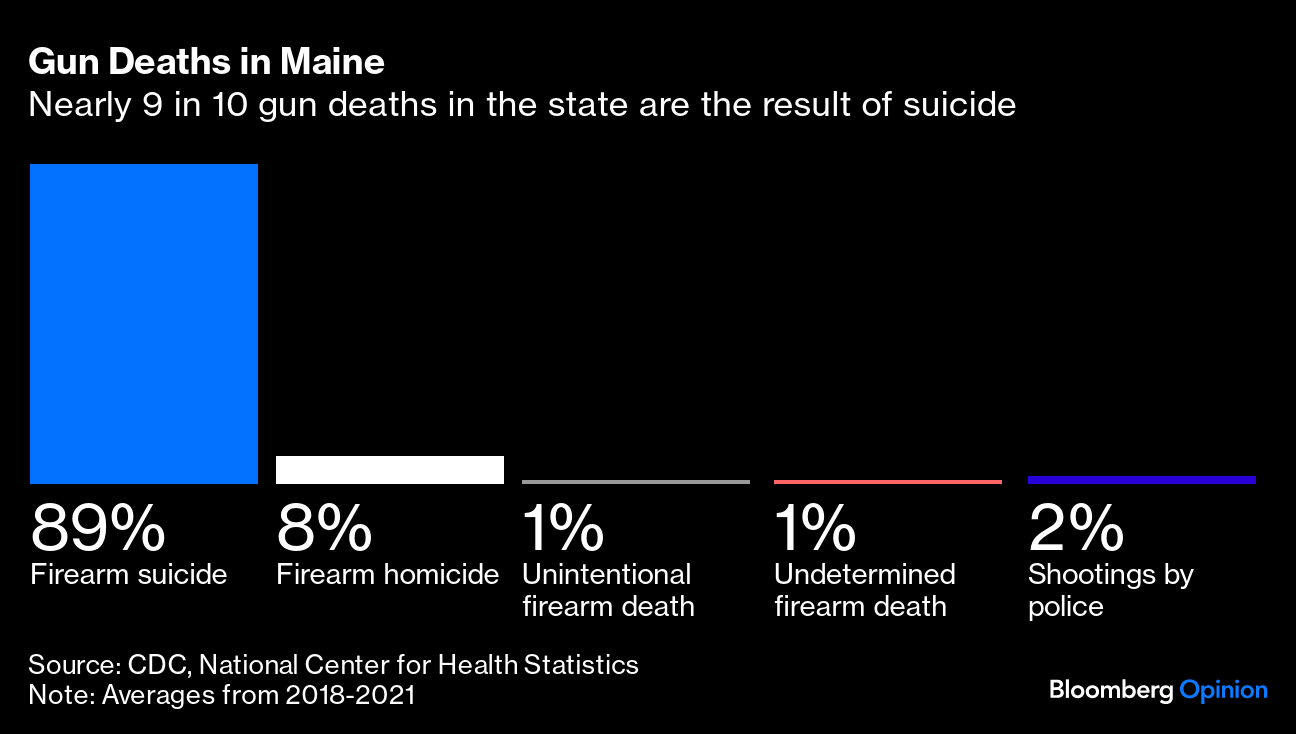 |
|
Ukrain needs more help / L’Ukraine mérite toujours toute notre aide
|
09
- 30/10/2023
|
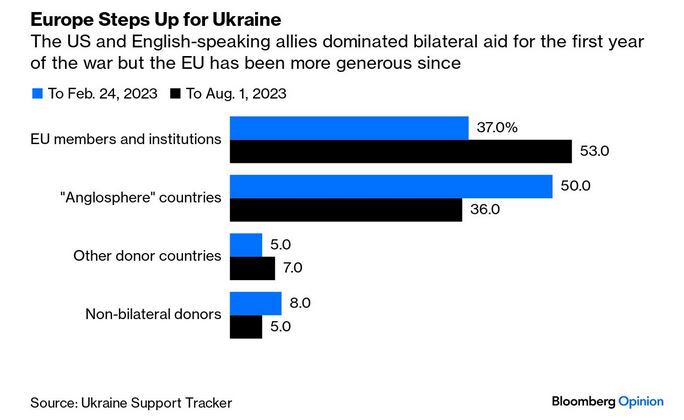 |
|
USA Homeownership by age / Propriétaires US et leur âge
|
10
- 30/10/2023
|
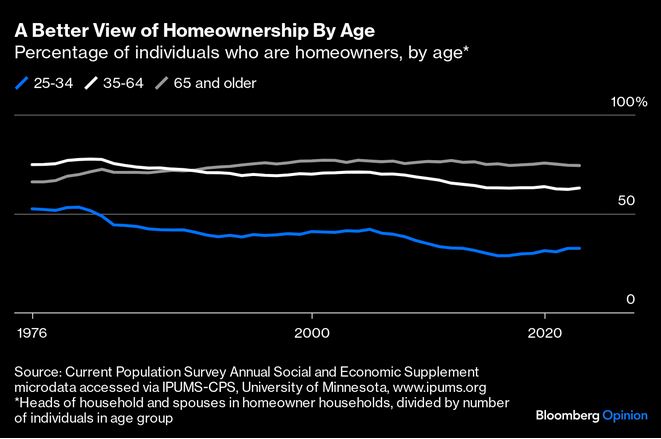 |
|
Farm management software adoption still low in Africa despite need
for it, by John Njiraini, October 18, 2023
Smallholder farmers dominate African agriculture, producing 70% of the
continent’s food supply on an estimated 33 million farms. With agriculture
becoming increasingly vulnerable to climate change, accelerated land degradation
and declining farming land due to population growth, these groups need
more smart farming solutions.
Yet adoption of smart farming and livestock management solutions, and
on-farm and remote sensors, remains extremely low across African agriculture
— leading to low productivity and perennial food insecurity.
In 2022, venture capitalists pumped a paltry $3.2 million in farm management
software & sensing internet of things (IoT), according to AgFunder’s
new Africa AgriFoodTech Investment Report produced in collaboration with
the Bill & Melinda Gates Foundation, FMO Ventures Program, and Mercy
Corps Ventures.
However, this number is up from the previous year, which saw startups
in the category raise just $335,000.
South Africa and Egypt, two countries that have made strides in modernizing
agriculture, attracted over 80% of the funding.
.../...
|
|
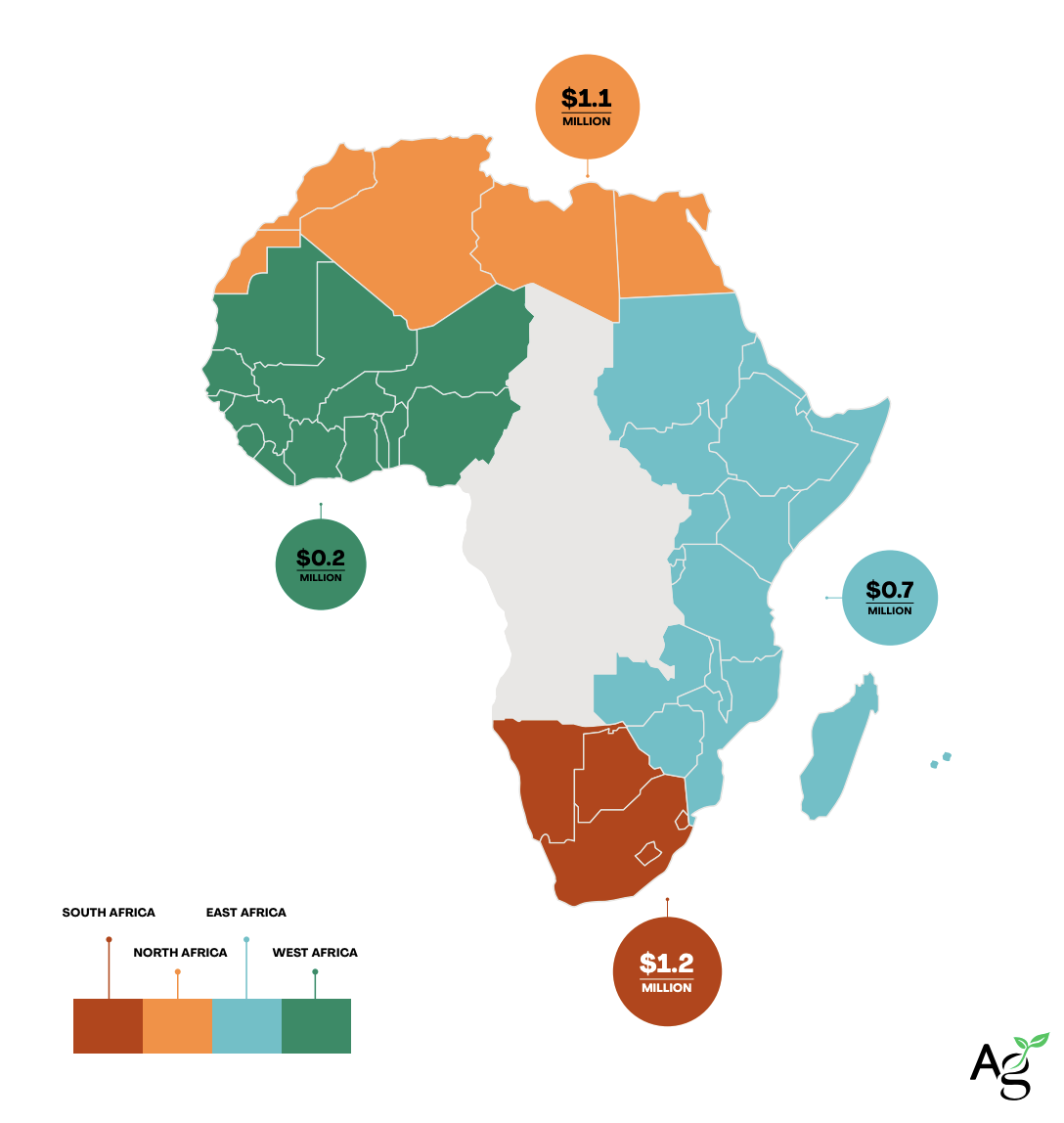 |
|
|
|
 |
|
Talking farming robots with Muddy Machines at the Goodwood Festival
of Speed, October 13, 2023
It’s no secret labor is one of the top challenges for agriculture across
most types of crops, and one area where ag robotics could play a major
role. UK-based farm automation startup Muddy Machines is tackling that
problem starting with asparagus.
“For every worker that an asparagus farm is short [of], they’re losing
up to 25,000 pounds of crop per season,” Muddy Machines founder and CEO
Florian Richter recently told AgFunderNews managing editor Louisa Burwood-Taylor.
.../...
See
agfundernews.com
Farm management software adoption still low in Africa: Why is adoption
of smart farming and livestock management solutions so low in Africa?
By John Njiraini
Smallholder farmers dominate African agriculture, producing 70% of the
continent’s food supply on an estimated 33 million farms. With agriculture
becoming increasingly vulnerable to climate change, accelerated land degradation
and declining farming land due to population growth, these groups need
more smart farming solutions.
Yet adoption of smart farming and livestock management solutions, and
on-farm and remote sensors, remains extremely low across African agriculture
— leading to low productivity and perennial food insecurity.
In 2022, venture capitalists pumped a paltry $3.2 million in farm management
software & sensing internet of things (IoT), according to AgFunder’s
new Africa AgriFoodTech Investment Report produced in collaboration with
the Bill & Melinda Gates Foundation, FMO Ventures Program, and Mercy
Corps Ventures.
However, this number is up from the previous year, which saw startups
in the category raise just $335,000.
South Africa and Egypt, two countries that have made strides in modernizing
agriculture, attracted over 80% of the funding.
.../...
See
agfundernews.com
Talking farming robots with Muddy Machines at the Goodwood Festival
of Speed, by Louisa Burwood-Taylor
It’s no secret labor is one of the top challenges for agriculture across
most types of crops, and one area where ag robotics could play a major
role. UK-based farm automation startup Muddy Machines is tackling that
problem starting with asparagus.
“For every worker that an asparagus farm is short [of], they’re losing
up to 25,000 pounds of crop per season,” Muddy Machines founder and CEO
Florian Richter recently told AgFunderNews managing editor Louisa Burwood-Taylor.
Not that Muddy Machines is limiting its Sprout field robot to just one
crop. Courgette [a.k.a. zucchini] harvesting, lettuce harvesting, weeding
and beans are just a few of the other areas Sprout will take on in the
future.
“We really want to be the company that solves the problem of how to get
more robots into the field,” said Richter.
At the Goodwood Festival of Speed this year, he explained how Muddy Machines
plans to do that. He also shared his thoughts on the AI and whether it
will take jobs, as well as how farm robotics startups can collaborate
more productively.
…/…
See
agfundernews.com
Farm robotics startups face a talent shortage. Academia and tech are
working together to change that, by Jennifer Marston, October 5, 2023
Startups have made strides in the last few years turning the theoretical
benefits of ag robotics and automation into actual realities for farmers.
But there’s still a ton of work to be done when it comes to making tools
that are complex enough for smart spraying and laser weeding, but don’t
also require a PhD to operate.
Ergo, startups will have a lot of new hires to make in the coming years,
many of them from the growing pool of talent coming out of college, said
many at the FIRA USA 2023 farm robotics show in Salinas, California.
Enter the annual Farm Robotics Challenge organized by the AI Institute
for Next Gen Food Systems (AIFS), University of California Agriculture
and Natural Resources (UC ANR) initiative the VINE, the Fresno-Merced
Future of Food (F3) coalition, and robotics company farm-ng.
The three-month-long challenge aims to give students hands-on experience
developing practical applications for farm robotics while also training
up the next wave of talent for the agtech industry to hire.
“We always had this mission to bring tech and agriculture and education
together in a creative ways,” says Gabe Youtsey, CIO at UC ANR and cofounder
of the VINE.
At FIRA, Youtsey announced the launch of the second annual Farm Robotics
Challenge, which is currently taking registrations. In conversation with
AgFunderNews at the show, he laid out the benefits of such a program for
students and startups alike.
.../...
See
agfundernews.com
| |
The
Efita newsletter is sponsored by:

|
Great Barrier Reef’s record coral cover is good news but climate threat
remains, by Graham Readfearn, 5 Aug 2022
The world heritage site still has some capacity for recovery but the window
is closing fast as the climate continues to warm
See
theguardian.com
High hopes for short corn, 26 Oct 2023, by by Erik Stokstad
Plants bred or engineered to be short can stand up better to windstorms.
They could also boost yields and benefit the environment.
.../...
Decades after wheat and rice were transformed in the Green Revolution, corn
is getting its turn.
See archive of
a paper published by Science
Taking a Deep Dive into Climate Data
Our climate is ever-changing, and the stress these conditions are placing
on our crops is tremendous. Drought, increasing rainfall, and extreme weather
conditions are adversely affecting the health of our soil as well as the
hydrological cycle. In order to study current and future weather patterns
in different regions across the globe, researchers need accurate modeling
tools based on atmospheric data.
Accurately modeling variables such as precipitation and drought requires
long-term, high-resolution, and high-quality data for a number of different
variables. However, datasets that meet these requirements are often not
available, especially across large swaths of land in the Global South, such
as Africa and South America.
“Ground stations providing long-term climate observations are largely concentrated
in Europe, Australia, and North America, and this hampers our ability to
model current and future evolution of critical climate parameters across
large areas of land,” said Dr. Andrew Fullhart, post-doc at ARS’s Southwest
Watershed Research Center in Tucson, AZ. Fullhart is also a member of the
Long-term Agroecosystem Research network.
Researchers currently apply transformations to popular global datasets to
estimate an average variable value at a given single (point-scale) location.
One such transformation is called statistical downscaling. The popular weather
generator CLImate GENerator (CLIGEN) can be used for statistical downscaling
of global data in areas where primary data sources are scarce or non-existent.
A flowchart showing statistical downscaling of 20-year gridded precipitation
parameters with gradient boosting algorithms
However, statistical downscaling can result in significant modeling uncertainties
because regional and local climate conditions can be complex and variable.
What is needed is a strong climatic baseline to use in conjunction with
CLIGEN to more accurately predict future weather patterns. Recently, Fullhart
and his colleagues developed a CLIGEN gridded dataset, yielding 20-year
average point-scale data across Africa and South America. Their approach
made use of powerful machine learning-techniques that analyze 21 variables,
including mean precipitation, annual rainfall, surface air pressure, latitude,
and elevation, along with a variety of statistical measures.
The grid created by Fullhart includes 40,936 points in Africa and 24,588
points in South America based on data from the past two decades. Fullhart
utilized several data sources to compile this gridded dataset, including
satellite-based remote sensing datasets and climate model reanalyzes – creating
a comprehensive record of weather dynamics during the 21st century. Fullhart
also collected directly observed precipitation data from two global ground-based
networks, covering over 11,000 stations.
.../...
See
tellus.ars.usda.gov
Sainte-Barbe Fountain / Fontaine Sainte-Barbe, par Henri Alphonse Barnoin
(1882-1940)
|
05
- 30/10/2023
|
 |
|
Old Breton Man (1910), par Charles Rivière (1848-1920)
|
06
- 30/10/2023
|
 |
|
Old Breton Woman / Veille Bretonne (1910), par Henri Guinier (1867-1927)
|
07
- 30/10/2023
|
 |
|
Canadian cattle industry has a beef with British trade deal
This week, the Canadian Cattle Association, Canadian Meat Council, and
National Cattle Feeders’ Association launched the “Say No To A Bad Deal”
campaign and website. The associations’ goal is to pressure the Canadian
government into keeping Britain out of the Comprehensive Progressive Trans-Pacific
Partnership — at least until a trade deal is made that they feel is more
fair to Canadian producers.
The partnership was announced in July, welcoming Britain, the 12th member
of the pact. Although International Trade Minister Mary Ng supports the
addition, Canada’s red meat sector is vehemently opposed to the addition,
saying that Britain hasn’t met the standards of the free trade agreement.
The problem is that Britain won’t permit Canadian pork or beef imports
because the United Kingdom does not accept Canadian food safety systems.
.../...
See
agdaily.com
Plant-Based Yogurt? By Chuck Dinerstein, MD, MBA — September 4, 2023
Remember plant-based meats? Ok, then how about plant-based yogurt? Roughly
6.3% of the dairy consumed finds its way into yogurt. The environmental
footprint of the producers of that yogurt is significant. How does plant-based
yogurt measure up nutritionally against the classic?
.../...
Plant and dairy-based yogurts are similar, not the same, and that is alright.
If you must use solely plant-based yogurts because of your dietary choices,
you will need supplements, but you already knew that. Adding plant-based
yogurts into an already balanced, diverse diet is nutritionally sound
for most of us. Whether we can eat our way to significantly fewer greenhouse
gases by switching to plant-based yogurts is more aspirational than real.
See
acsh.org
In agricultural advocacy, choose unification, not more division, by
Michelle Miller, Farm Babe
When your passion is public speaking, it is disappointing to lose an opportunity.
A few months ago, I reserved a date in November to be a keynote speaker
with the University of Wisconsin Extension, but due to a single compliant
directly to the university, I had been removed from the agenda. It’s sad
to not be able to address an audience in my home state, but such cancellations
also have significant financial impact, as I had to pass on other opportunities
in order to speak at UW.
Why would an academic institution like University of Wisconsin cancel
my presentation? What kind of complaint was it?
The complaint originated from Pam Janke, a well-known, award-winning farm
broadcaster in Southwest Wisconsin. She’s been hosting a regional morning
farm report for decades.
.../...
See
agdaily.com
Arizona National Livestock Show: A visual walk through livestock show
trends from 1990s to 2020s
Like many other competitions, showing livestock has undoubtedly changed
over the years from the breeds shown to the type of animals exhibited,
and more.
See agdaily.com
Killing yourself by Fentanyl / Se tuer avec le Fentanyl
|
11
- 30/10/2023
|
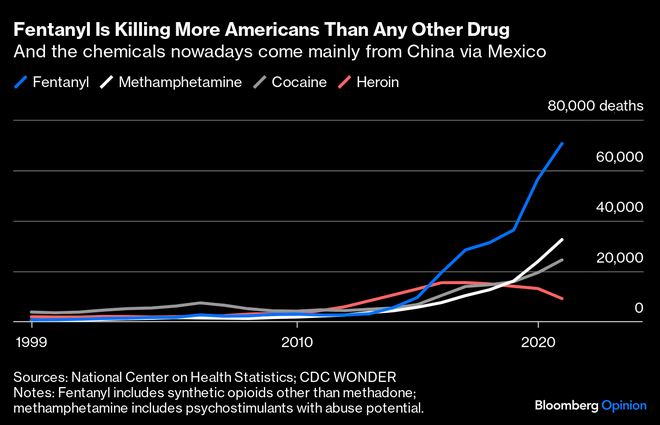 |
|
Rent burden / Coût des loyers
|
12-
30/10/2023
|
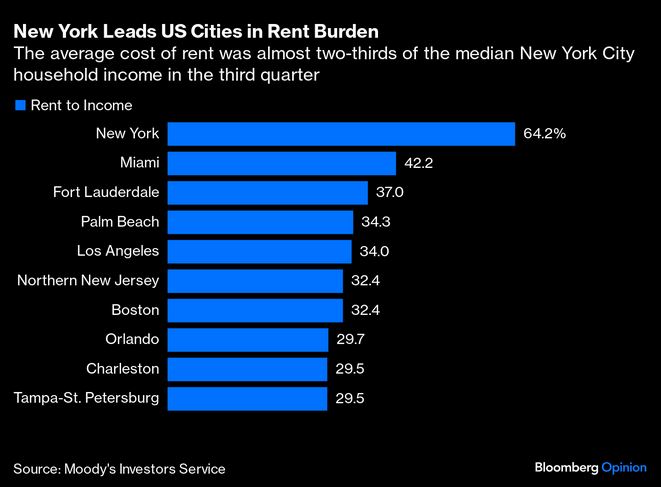 |
|
Increasing Interest rates
|
13
- 30/10/2023
|
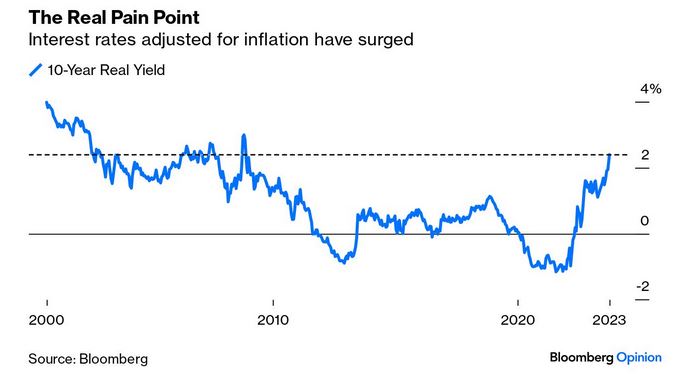 |
|
To learn or not to learn about climate change? Apprendre ou non ce
qu’est le changement climatique
|
14
- 30/10/2023
|
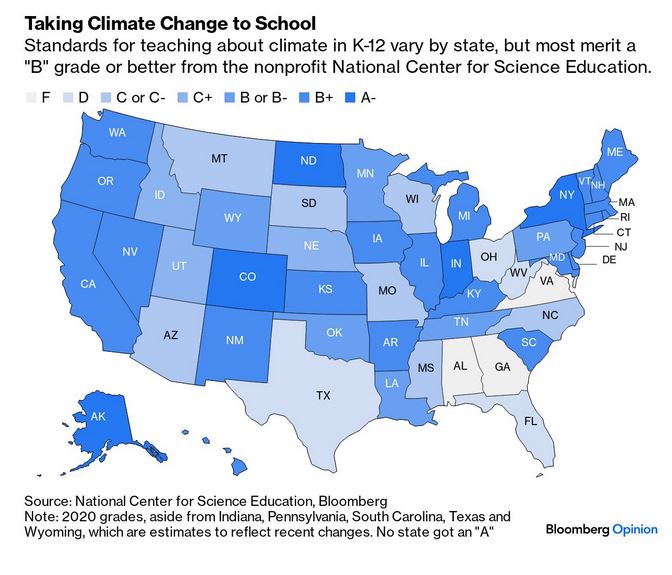 |
|
Progress on girls’ access to education: What the new UNESCO data reveals
New UNESCO data reveals that 50 million more girls have been enrolled
in school globally since 2015.
…/…
New data drawing from the UNESCO Institute for Statistics shows that there
are 22.5 million more girls in primary school, 14.6 million more in lower
secondary and 13 million in upper secondary education now than in 2015.
Completion rates of girls increased from 86% to 89% in primary education,
from 74% to 79% in lower secondary and 54% to 61% in upper secondary education.
That means that 5 million more girls are completing each level of education
from primary to upper secondary education now than there were in 2015.
As a global average, girls are now outperforming boys in reading across
all education levels and country income groups. They are also performing
the same as boys in mathematics.
…/…
See
unesco.org
Reduce synthetic fertilizers and improve yields? The microbiome revolution
comes to agriculture, by Henry Miller, Kathleen Hefferon, August 29, 2023
.../...
An intricate relationship like that between humans and microorganisms
also exists between microorganisms and our soil. Mimicking the impact
of deciphering the microbiome on human health, could an improved comprehension
of the soil microbiome lead to a better understanding of complex environmental
problems, and perhaps offer new solutions? Might knowing more about the
soil microbiome even provide us with new approaches to the formidable
problem of climate change? Could this research lead to a sharp reduction
in the use of polluting synthetic fertilizers?
.../...
See
geneticliteracyproject.org
Drought-resistant millets could help the Midwest survive climate change,
By Eva Tesfaye, Harvest Public Media, August 31, 2023
.../...
More research is needed to really advance millets, said Myers of the University
of Missouri.
“If you spend an extra $1 million on corn research, you don’t necessarily
advance the state of corn science very much,” he said, “but if you spent
a million dollars on millet research, you might suddenly create a whole
lot of new information that we didn’t have before.”
For example, millet yields would be easier to improve than getting corn
to take up less water, according to James Schnable, a professor at the
University of Nebraska. He and his father, Patrick Schnable, a professor
at Iowa State University, co-founded the start-up, Dryland Genetics. A
lack of funding for research is partly why they started a company to research
and breed proso millet.
“[Proso millet] is in this weird hole in the federal funding schemes,
which is part of why we ended up using private money to start Dryland
Genetics. Because it’s a grain, it doesn’t qualify for a lot of the specialty
crop grants,” said James Schnable.
In Ames, Iowa, farmer Jeff Taylor said he started growing proso millet
about six years ago, with the help of Dryland Genetics. He thinks more
farmers would try new crops if federal programs would shoulder some of
the risk.
“It would be wonderful if crops like proso millet were researched more
and there were some incentives for farmers to consider planting alternative
crops outside of just corn and soybeans,” he said.
See
agdaily.com
Insights Into The European Approach To PFAS, By Susan Goldhaber MPH
— October 17, 2023
I have previously authored many articles about per- and polyfluroalkyl
substances (PFAS), also known as “forever chemicals,” and the misinformation
and lack of scientific credibility surrounding them. However, Europe has
outdone the U.S. on the absurdity of their proposed regulations on these
chemicals. On February 7, 2023, the European Chemicals Agency (ECHA) proposed
to ban all PFAS, which would affect more than 12,000 chemicals. To do
this, they used a definition of PFAS so broad that it includes almost
any chemical that contains fluorine [1]. What is going on?
See
acsh.org
Taylor Swift performance / La performance extraordinaire de Taylor
Swift
|
15
- 30/10/2023
|
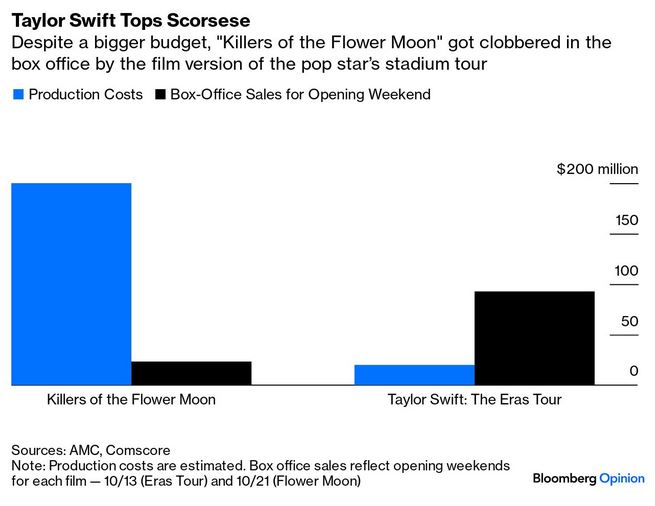 |
|
USA : Hiring More People of Color / Embaucher des gens de couleur
aux USA
|
16
- 30/10/2023
|
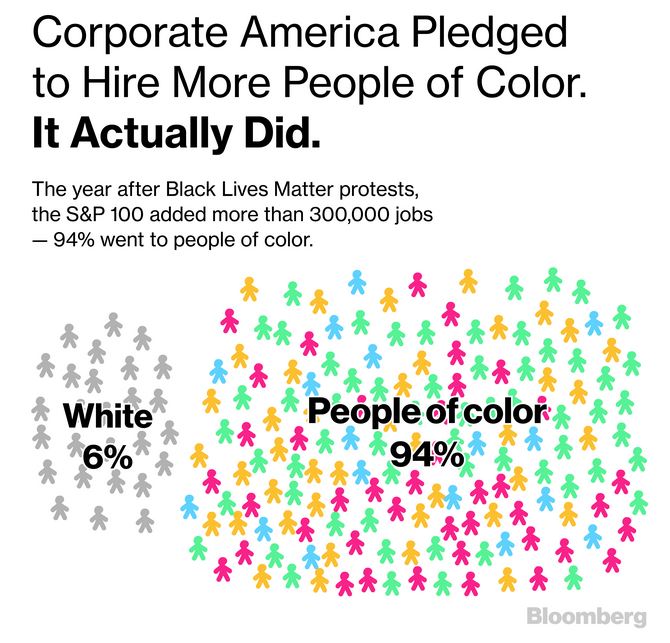 |
|
We've massively reduced the amount of land required to feed a person
/ Nous avons besoin de moins en moins de terre pour nourrir l’humanité
Agriculture Land Use per capita for the latest 2000 years…
|
17
- 30/10/2023
|
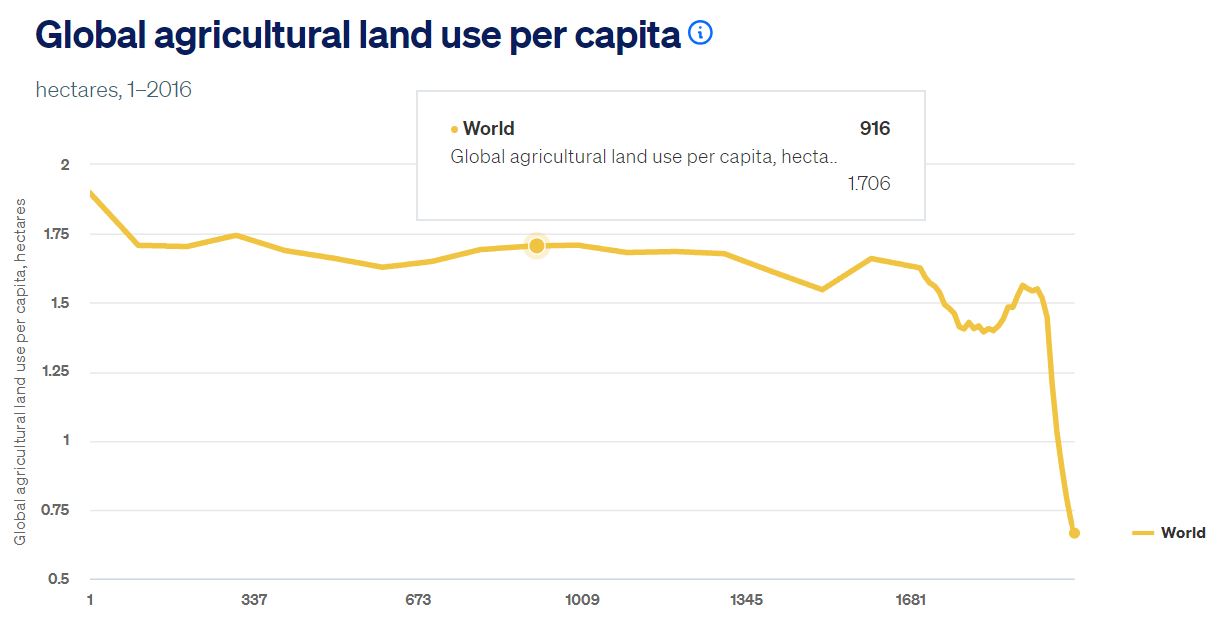 |
|
Land use of energy sources per unit of electricity / La consommation
de surface par la production d’énergies
|
18
- 30/10/2023
|
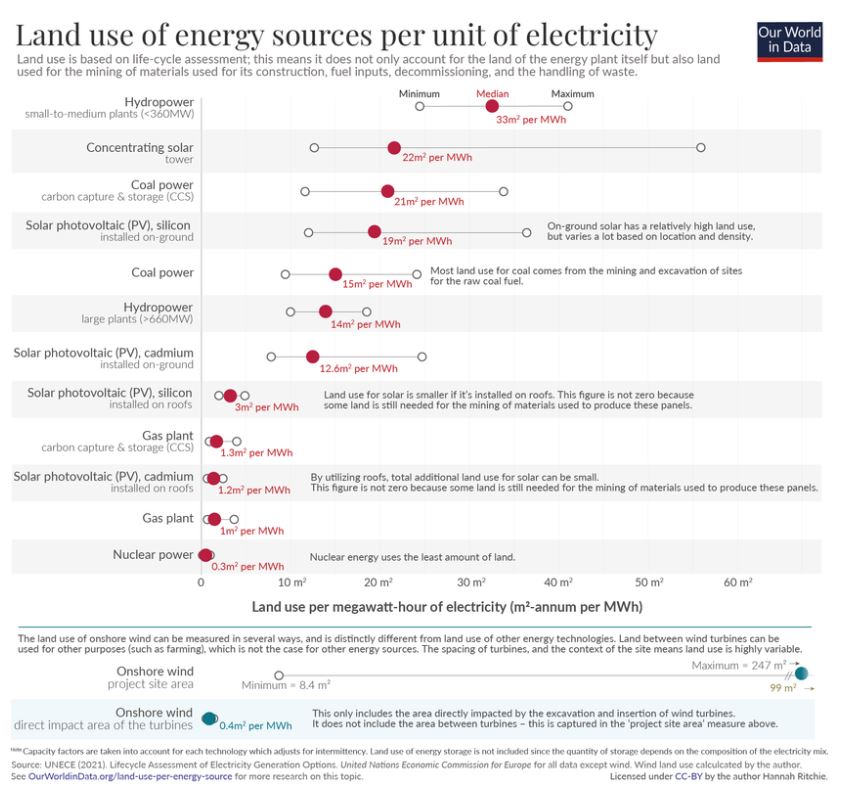 |
|
Ireland: a territory dedicated to multinational companies / Le sort
de l’Irlande lié à celui des multinationales qui y ont leur siège européen
|
19
- 30/10/2023
|
 |
|
Situation not as bad as thought / La situation n’est pas “si pire”
|
20
- 30/10/2023
|
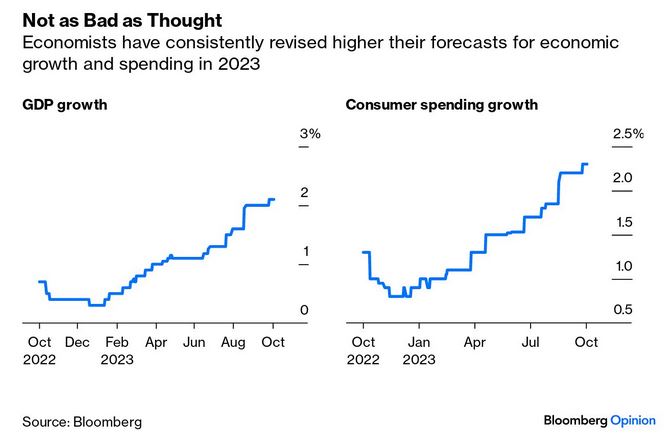 |
|
Leaving mass at Faouët / Sortie de messe au Faouët (détail) de
Henri Barnoin (1882-1940), Collection musée du Faouët
|
08
- 30/10/2023
|
 |
|
Bigoudène women at work / La Bigoudène au travail (huile sur
toile, 1926), par Henri Guinier (1867-1927), musée départemental breton
de Quimper
|
09
- 30/10/2023
|
 |
|
The miraculous fountain / La fontaine miraculeuse, pardon des aveugles,
chapelle de La Clarté à Combrit, Pays Bigouden (1914), de Henri Guinier
(1867-1927), musée départemental breton de Quimper
|
10
- 30/10/2023
|
 |
|
Peasant woman from Concarneau / Paysanne de Concarneau (vers 1920),
de Henri Guinier (1867-1927), musée départemental breton de Quimper
|
11
- 30/10/2023
|
 |
|
The old earthman / Le vieux terrien (Salon de 1921), de Henri Guinier
(1867-1927)
|
12
- 30/10/2023
|
 |
|
Woman with red flowered headdress / Femme à la coiffe rouge à fleurs
(pastel), de Henri Guinier (1867-1927), Musée du Faouët
|
13
- 30/10/2023
|
 |
|
"Bad" Joke
"Our World in Data" has launched a major redesign of our
interactive data visualizations
Interactive data visualizations are at the heart of our work. The Our
World in Data “Grapher” is the software we’ve developed in-house to let
you, our readers, explore and visualize data. It powers all the interactive
charts on our website.
You can also find our Grapher charts elsewhere, such as embedded in news
articles or other websites; reusability is at the core of its design.
Maintaining and improving this software is a significant part of our team’s
work. But the latest round of changes marks a more substantial and concerted
effort over the past few months to rethink and improve the layout and
functionality of our charts.
In this article, we show the changes we’ve made and talk about why we
made them, our plans to improve things further, and how you can help.
|
|
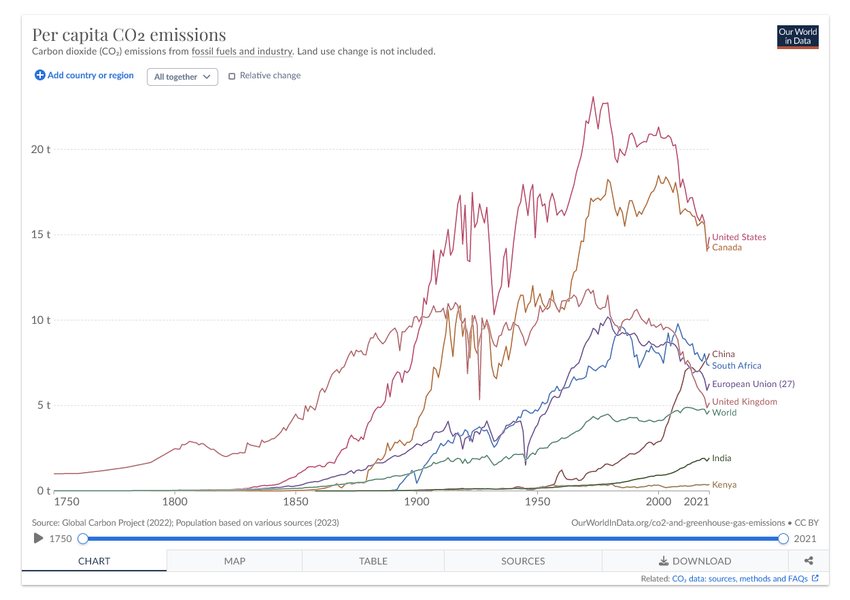 |
|
Guinea worm disease is close to being eradicated — how was this progress
achieved?
Guinea worm disease is a painful and debilitating disease that was once
common in Asia, the Middle East, and many countries in Africa. In 1989,
almost 900,000 cases were recorded globally.
In 2022, the number of cases had fallen to just 13. Guinea worm disease
is now close to being eradicated.
Although there is no vaccine, this much progress has been possible because
we know how to prevent the disease's spread: by preventing people from
drinking contaminated water. The eradication program has therefore focused
on water treatment and filtration, public education, and providing safe
sources of drinking water.
In this article, we explain what guinea worm disease is, which countries
have eliminated it, and the challenges that remain to eradicate the disease
once and for all.
|
|
 |
|
How does the land use of different electricity sources compare?
All energy sources have an environmental impact. Whether it’s coal or
gas, nuclear or renewables, every energy source takes up land, uses water,
and needs natural resources for fuel or manufacturing.
But there are vast differences in these impacts between sources. Fossil
fuels emit much more greenhouse gasses per unit of energy than nuclear
or renewables. They kill many more people from air pollution, too.
How do these energy sources stack up when it comes to land use?
In this article, we describe how the land use of different sources is
measured by taking the full life-cycle of an energy source into account.
|
|
 |
|
A Man goes to see the rabbi
“Rabbi, something terrible is happening and I have to talk to you about
it.”
The Rabbi asked,
“What”s wrong?”
The man replied,
“My wife is poisoning me.”
The Rabbi, very surprised by this, asks,
“How can that be?”
The man then pleads,
“I”m telling you, I”m certain she”s poisoning me, what should I do?”
The Rabbi then offers,
“Tell you what. Let me talk to her, I”ll see what I can find out and I”ll
let you know.”
A week later, the Rabbi calls the man and says,
“Well, I spoke to your wife. I spoke to her on the phone for three hours.
You want my advice?”
The man said YES and the Rabbi replied, “Take the poison.”
The creation of this efita newsletter is sponsored by Acta Digital
Services and its distribution by vitisphere.com
Please, contribute to the content of your efita newsletter, and advertise
your events, new publications, new products and new project in this
newsletter. Without your support, it will not survive!
Contact: Guy WAKSMAN
E-mail: guy.waksman(a)laposte.net
To read this newsletter on our web site
See Efita
The archives of this newsletter
See Efita
About the EFITA mailing list
You can use the efita moderated list (> 15000 subscribers) to announce
any event / product / web site / joke (!) related to IT in agriculture,
environment, food industry and rural areas.
If you want to subscribe a friend, please fill in his
form.
If you do not wish to receive our messages, please fill in the following
form...
|




